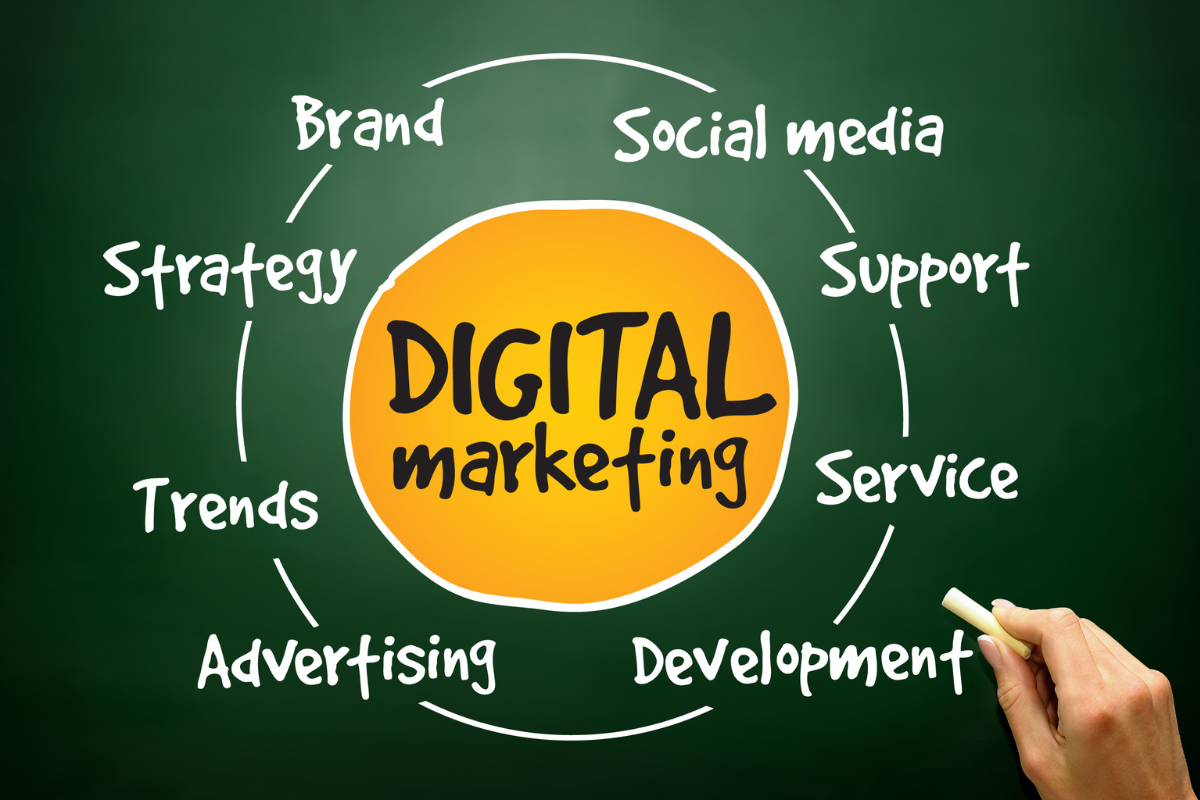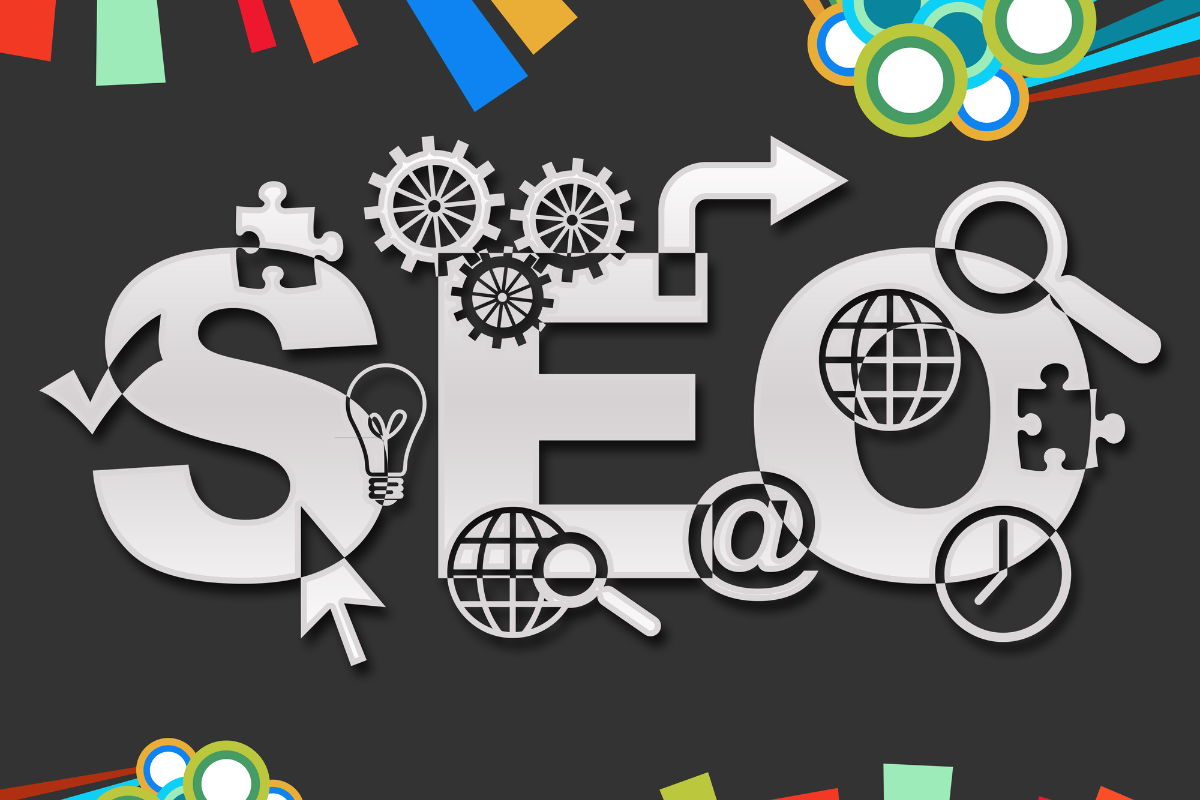
Post Title
The Powerful Duo of SEO and Content Marketing for Business Growth
October 7, 2024
With technology becoming essential for everyone—from small business owners and digital marketers to content creators and entrepreneurs—the need to stand out online is more important than ever.
Two powerful strategies for achieving this are Search Engine Optimization and content marketing. Each brings its own strengths to the table, but the real impact happens when they’re combined.
Let’s explore how SEO and content marketing can work together to elevate your brand, attract more leads, and pave the way for lasting success.
Getting Started with SEO and Content Marketing

Learn the basics of site optimization and content creation to boost visibility and keep your audience engaged. When SEO techniques are aligned with compelling, high-quality content, businesses can strengthen their online presence, attract more visitors, and achieve sustainable success.
What is SEO?
Search Engine Optimization (SEO) is all about making a website more visible on search engine results pages (SERPs). The main objective is to attract organic (non-paid) traffic from major search engines like Google, Bing, and Yahoo. This involves optimizing different parts of your site, such as keywords, meta tags, and content, to improve relevance and appeal for search engines. The better optimized your site is, the more likely it is to rank higher in search results when people look for related topics.
SEO also focuses on enhancing the overall user experience, including aspects like page load speed and mobile accessibility. Mastering these techniques can help bring in more visitors, increase lead generation, and support business growth online.
What is Content Marketing?
Content marketing takes a strategic approach by creating and sharing valuable content tailored to engage a target audience. Rather than directly promoting products or services, content marketing seeks to drive customer action by offering helpful insights, information, or entertainment that meets the audience's needs and interests. Content can come in many forms, including blog posts, articles, videos, infographics, and social media updates.
The ultimate aim of content marketing is to build trust and establish authority, guiding people through their buying journey and fostering loyalty. By consistently delivering high-quality content, businesses can enhance their brand, increase traffic, and generate leads in a way that feels both organic and compelling.
The Benefits of SEO
Discover the benefits of SEO and how it can transform your online presence. From increasing your website’s visibility and attracting targeted traffic to enhancing user experience and boosting credibility, SEO is a vital strategy for driving business growth and achieving long-term success.
- Increased Visibility: Improved rankings on SERPs lead to higher visibility and more organic traffic.
- Cost-Effective: Organic search traffic is free, making SEO a cost-effective strategy compared to paid advertising.
- Credibility and Trust: Higher rankings signal to users that your website is a reputable source of information.
- Better User Experience: SEO practices such as improving site speed and mobile-friendliness enhance user experience.
- Long-Term Results: SEO efforts can yield long-lasting results and continuous traffic over time.
The Benefits of Content Marketing

Explore the benefits of content marketing and see how it can elevate your brand. By creating valuable, relevant content, you can engage your audience, build trust, drive traffic, and generate leads. Discover how this strategy fosters deeper connections and supports sustained business growth.
- Audience Engagement: High-quality content captures and retains audience attention, fostering engagement.
- Brand Authority: Consistently providing valuable content positions your brand as an industry expert.
- Lead Generation: Content marketing generates leads by nurturing potential customers through informative content.
- Customer Loyalty: Engaging content builds a loyal customer base that trusts your brand.
- Versatile Formats: Content can be repurposed across various formats such as blogs, videos, infographics, and podcasts.
SEO vs. Content Marketing: Key Differences Explained
Let’s explore what sets SEO and content marketing apart. While both are essential for digital growth, they each serve unique roles and strategies. This guide will help you understand how SEO works to improve your search visibility, while content marketing focuses on connecting with and engaging your audience.
Search Engine Optimization
SEO centers on fine-tuning your website and its content to rank higher on search engine results pages.
- Primary Goal: Increase organic traffic and online visibility.
- Key Techniques: Using keyword research, optimizing on-page elements, building links, and addressing technical SEO.
- Expected Outcome: Higher rankings on search engines, improved user experience, and more site visitors.
Content Marketing
Content marketing, on the other hand, is all about creating and sharing valuable content that resonates with your audience.
- Primary Goal: Build trust, establish authority, and cultivate strong audience relationships.
- Types of Content: Blog posts, articles, videos, infographics, and social media content.
- Expected Outcome: Enhanced brand trust, engaged followers, and more potential leads.
By understanding these differences, businesses can effectively combine both strategies to boost their online presence and achieve their goals. So, how do SEO and content marketing work together to drive business growth?
How SEO and Content Marketing Complement Each Other

Explore how SEO and content marketing work together to amplify your online presence. By integrating SEO’s optimization techniques with content marketing’s engaging strategies, you can drive more traffic, enhance visibility, and achieve greater business success. Discover the synergy that makes this combination powerful.
Keyword Research and Strategy
- SEO Aspect: Keyword research identifies the terms and phrases your target audience is searching for. This helps in optimizing content to rank higher on search engines.
- Content Marketing Aspect: Using the identified keywords, content marketers can create relevant and valuable content that addresses the audience's needs and queries.
Content Creation
- SEO Aspect: Creating content that incorporates targeted keywords, meta tags, and descriptive URLs improves search engine rankings.
- Content Marketing Aspect: High-quality content that is informative, engaging, and shareable attracts and retains an audience, fostering trust and credibility.
On-Page SEO
- SEO Aspect: On-page SEO involves optimizing individual web pages to rank higher and earn more relevant traffic. This includes using proper header tags, alt text for images, and internal linking.
- Content Marketing Aspect: Well-structured content with clear headings, subheadings, and visual elements enhances readability and user experience.
Link Building and Backlinks
- SEO Aspect: Earning backlinks from reputable websites signals to search engines that your content is valuable and trustworthy.
- Content Marketing Aspect: Creating high-quality, shareable content naturally attracts backlinks from other websites and influencers in your industry.
User Experience and Engagement
- SEO Aspect: SEO practices such as improving site speed, mobile responsiveness, and easy navigation contribute to a better user experience.
- Content Marketing Aspect: Engaging and valuable content keeps users on your site longer, reducing bounce rates and increasing the likelihood of conversions.
Integrating SEO and Content Marketing Strategies
Discover how to integrate SEO and content marketing strategies for maximum impact. Each of these steps works together to keep your content relevant, effective, and aligned with your business goals. Learn how this integration leads to a more effective digital marketing approach.
Building a Content Calendar
A content calendar is essential for organizing your content creation and publishing schedule. It helps you stay consistent and aligned with your SEO goals and audience interests. With a content calendar, you can plan topics, ensure timely publication, and maintain a steady flow of relevant content that engages your audience and drives traffic.
Optimizing Existing Content
To keep your content relevant and visible, regularly update and optimize older posts. This might mean refreshing articles with new information, refining keywords, and improving readability. Search engines favor up-to-date content, so routine optimization boosts your chances of ranking higher and staying competitive.
Tracking and Analyzing Performance
Tracking your content’s performance is crucial for understanding what resonates with your audience. Tools like Google Analytics and SEMrush can give insights into organic traffic, bounce rates, and conversions. By analyzing these metrics, you’ll pinpoint what’s working and where improvements are needed, helping you refine your content and SEO strategies for even better results.
SEO and Content Marketing Trends

Stay ahead in digital marketing with the latest SEO and content marketing trends. This guide explores emerging strategies and innovations, from voice search optimization to AI tools, helping you adapt and thrive in a rapidly evolving landscape for better engagement and growth.
Voice Search Optimization
- Trend: Increasing use of voice-activated devices (e.g., smart speakers).
- Impact: Need to optimize for natural language and conversational queries.
- Strategy: Focus on long-tail keywords and question-based content.
AI and Automation
- Trend: Growing adoption of AI tools for content creation and SEO analysis.
- Impact: Enhanced efficiency in generating insights, optimizing content, and automating repetitive tasks.
- Strategy: Use AI-powered tools for keyword research, content recommendations, and performance analysis.
Content Personalization
- Trend: Increased demand for personalized user experiences.
- Impact: Higher engagement and conversion rates through tailored content.
- Strategy: Utilize data analytics to create customized content that resonates with different audience segments.
E-A-T (Expertise, Authoritativeness, Trustworthiness)
- Trend: Google's emphasis on E-A-T for high-quality content.
- Impact: Improved rankings for content that demonstrates expertise and trustworthiness.
- Strategy: Build and showcase credentials, publish authoritative content, and foster positive user reviews.
Visual and Video Content
- Trend: Rising popularity of visual and video content formats.
- Impact: Enhanced engagement and retention through multimedia.
- Strategy: Incorporate high-quality images, infographics, and videos into content strategies to capture audience interest.
Mobile-First Indexing
- Trend: Google’s shift towards mobile-first indexing.
- Impact: Importance of optimizing websites for mobile users.
- Strategy: Ensure responsive design, fast loading times, and mobile-friendly content.
Featured Snippets and Zero-Click Searches
- Trend: Growth in featured snippets and zero-click searches on SERPs.
- Impact: Opportunities to capture top search results and increase visibility.
- Strategy: Optimize content for snippet formats by providing clear, concise answers to common queries.
Content Quality Over Quantity
- Trend: Shift towards high-quality, in-depth content rather than frequent, low-quality posts.
- Impact: Better engagement and higher rankings for well-researched, valuable content.
- Strategy: Focus on creating comprehensive, informative content that addresses user needs effectively.
Interactive Content
- Trend: Increased use of interactive content like quizzes, polls, and calculators.
- Impact: Boosted user engagement and time spent on site.
- Strategy: Incorporate interactive elements to make content more engaging and gather valuable user data.
Local SEO Enhancements
- Trend: Growing importance of local search optimization.
- Impact: Enhanced visibility for businesses targeting local customers.
- Strategy: Optimize Google My Business profiles, encourage local reviews, and use local keywords.
Staying ahead of these trends can help businesses effectively integrate SEO and content marketing strategies, ultimately driving more traffic, engaging audiences, and achieving long-term success.
Debunking Common Myths in SEO and Content Marketing
Understanding how SEO and content marketing complement each other can sometimes be clouded by misconceptions. Here, we debunk common myths to help you leverage both strategies effectively.
1. SEO and Content Marketing Are the Same
One prevalent misconception is that SEO and content marketing are identical. While they are closely related, they serve distinct purposes. SEO focuses on optimizing your website to rank higher in search engine results through techniques like keyword research and link building. Content marketing, on the other hand, revolves around creating valuable, relevant content to engage your audience and build trust. Both are essential, but they address different aspects of digital marketing.
2. SEO Can Achieve Results Without Quality Content
Another myth is that SEO alone can drive significant traffic and achieve high rankings. In reality, high-quality content is crucial for SEO success. Search engines prioritize content that is informative, relevant, and user-friendly. Without engaging content, your SEO efforts may fall short, as search engines look for valuable information that meets user intent.
3. Content Marketing Doesn’t Need SEO
Some believe that content marketing operates independently of SEO. However, content marketing benefits greatly from SEO practices. Optimizing your content with relevant keywords, meta tags, and proper formatting helps it rank higher in search results and reach a larger audience. Ignoring SEO in your content strategy can limit its visibility and effectiveness.
4. SEO Results Are Instant
A common misconception is that SEO will deliver immediate results. In reality, SEO is a long-term strategy that requires time to see significant improvements in rankings and traffic. Similarly, content marketing also takes time to build an audience and generate engagement. Patience and consistent effort are key for both strategies to yield positive results.
5. Content Marketing Is All About Quantity
There is a belief that producing a high content volume will lead to better SEO and engagement. However, quality always outweighs quantity. Focus on creating well-researched, valuable content that addresses your audience’s needs and interests. Quality content is more likely to attract backlinks, improve user experience, and achieve better search rankings.
6. SEO and Content Marketing Can Operate in Silos
Some think SEO and content marketing should function independently. In reality, integrating these strategies leads to greater success. SEO insights can guide content creation, while high-quality content can enhance SEO performance. By aligning both strategies, you create a cohesive approach that maximizes visibility, engagement, and conversions.
7. SEO Guarantees Top Rankings
A frequent misconception is that implementing SEO techniques guarantees top search engine rankings. While SEO improves your chances of ranking higher, there are no guarantees due to ever-changing algorithms and competition. Combining SEO with strong content marketing enhances your chances, but results depend on various factors, including competition and ongoing optimization efforts.
Kickstart Your Digital Strategy with Visio SEO!

While SEO focuses on optimizing your website to rank higher in search results, content marketing is about creating valuable, relevant content that resonates with your audience. Together, they form a powerful duo, boosting online visibility, attracting targeted traffic, and converting leads into loyal customers.
SEO and content marketing are powerful tools on their own, but their true potential is realized when they work together. So, to drive business growth and convert leads into loyal customers, contact Visio SEO today.
Start improving your organic rankings by getting a FREE SEO consultation!
Contact Us
Contact Us
We will get back to you as soon as possible
Please try again later
Subscribe to Our Newsletter
Stay up to date with our latest offers and promotions by signing up now!
Contact Us
We will get back to you as soon as possible.
Please try again later.

We are the premier digital marketing solution in Elgin. Contact us today to get your free, no-obligation consultation!










